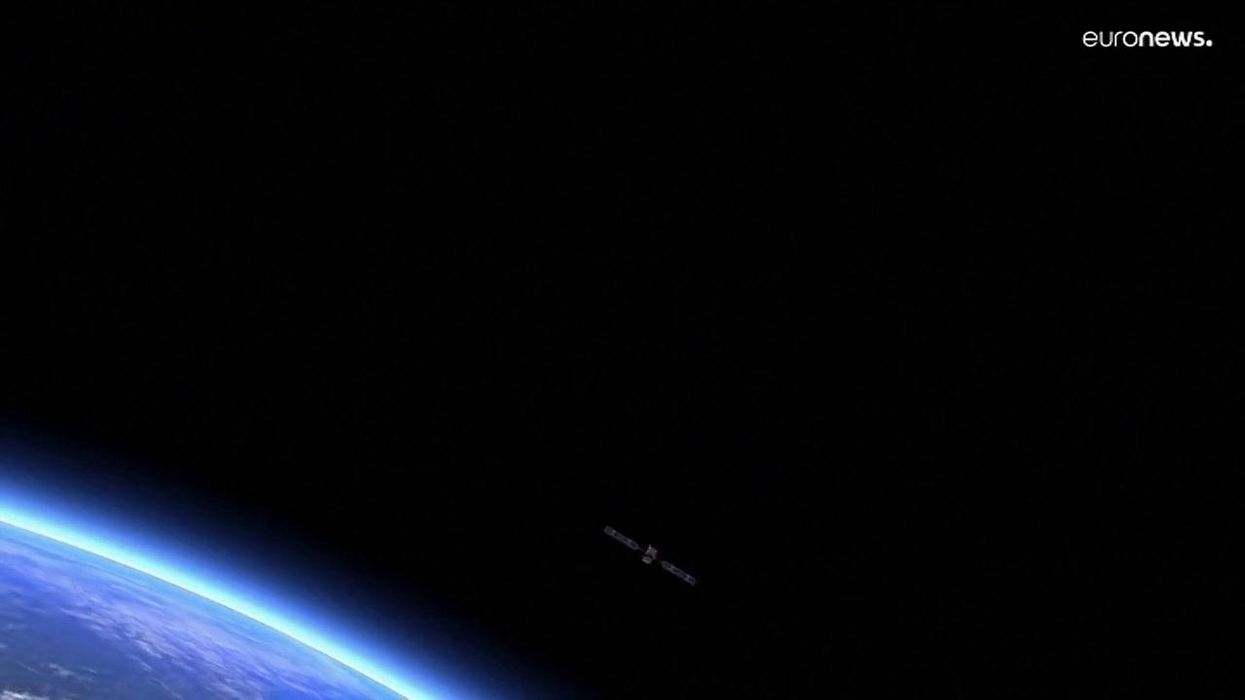Harriet Brewis
Jan 30, 2023
Attacks and cyberattacks on satellites becoming more common, says EU's top diplomat
content.jwplatform.com
Humans have been gazing at the stars for millennia, but experts have warned that could soon become a thing of the past.
It’s not just our ability to spot the constellations that’s in jeopardy, so too is our potential to detect alien life. And, as is the case with most bad news, it’s all our fault.
The night sky will be littered with satellites by 2030 if we continue along our current course, blocking out the stars and making astrological observations impossible.
Astronomers are already struggling to see through their telescopes thanks to the bright beams of light satellites reflect back down to Earth. They also have to contend with the waves emitted by internet satellites which can interfere with sensitive radio telescopes.
Sign up for our free Indy100 weekly newsletter
More than 8,000 satellites currently orbit the earth and the number is set to explode over the coming years, as The Telegraph reports. Around 400,000 have been approved globally for Low Earth Orbit (LEO), with SpaceX alone due to launch another 44,000 for its Starlink internet constellation.
“If you just went out in a dark place somewhere and looked at the sky in 2030 it would be a very macabre scene,” Physics and Astronomy professor Tony Tyson told the publication.
“The sky will be crawling with moving satellites and the number of stars that you would see are minimum, even in a very dark sky. It’s a major issue.”
Elsewhere, Dr Robert Massey, Deputy Executive Director of the Royal Astronomical Society (RAS), acknowledged that the problem could ruin our chances of making contact with extraterrestrial life
"Frankly, searching for the origin of life may be a long shot," he said. "But detecting signals from other civilizations becomes harder if you have an incredibly powerful and noisy sky.”
The downlink beams from internet satellites are millions of times more powerful than the sensitive sources radio telescopes are trying to detect. This means they could seriously scupper our ability to detect signals from space.

Dr Massey added that if the number of satellites in orbit were allowed to go unchecked, it would also have a huge impact on the natural landscape.
He pointed out that, unlike light pollution, “you cannot get away from it, because wherever you are on Earth you can see the sky”.
Scientists are also concerned about how to deal with the growing number of satellites once they stop working.
Ken MacLeod, an independent expert, has worked out that there will be thousands of decaying internet satellites that will need to come out of orbit once all the planned internet constellations are operational.
“They will cause re-entry fireballs,” he told The Telegraph. “If we really believe the numbers of how many are going to be falling, that’s about 60 every day and that’s much brighter than magnitude 7 (the faintest starlight visible with the naked eye) so they can cause troubles with all those observations.”

The likes of SpaceX are now working on how to tackle the issue, and are looking into creating sun visors for their satellites and other potential solutions.
However, so far none have proven effective, which is why experts are calling for urgent global regulation to limit numbers and force companies to remove their satellites from orbit once defunct.
Don’t look up, the movie told us.
Soon, if swift action isn’t taken, there might not be any point.
Have your say in our news democracy. Click the upvote icon at the top of the page to help raise this article through the indy100 rankings.
Top 100
The Conversation (0)














